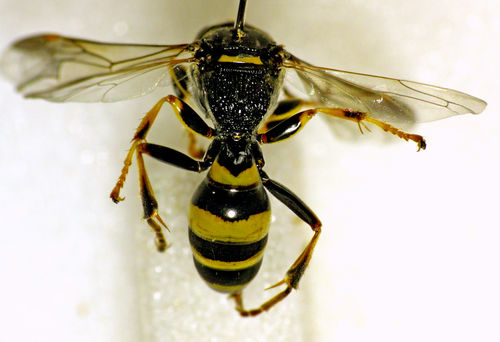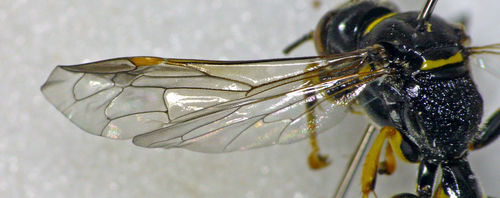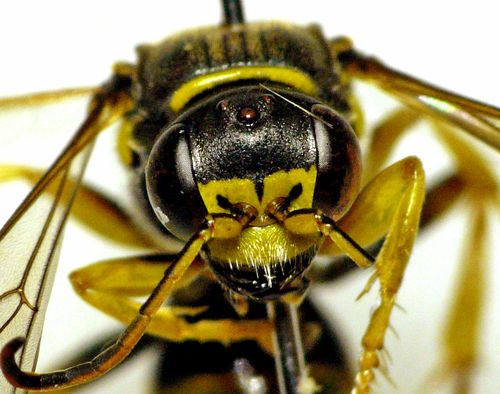Solitary wasp Gorytes laticinctus (Crabronidae); first record for Worcestershire
Martin B Skirrow and Geoff Trevis
On 12th March 2014 MBS found two female solitary wasps close together on the inside of a window in his converted cowshed dwelling on a farm in Berrow. Having established that all salient features of the two wasps appeared identical, he preserved one and released the other. The retained specimen was provisionally identified, with surprise, as Gorytes laticinctus (Crabronidae) (01, 02, 03). It was passed to GT who agreed with this, but as the NBN map (BWARS) showed that the nearest record of the species to Berrow was near Bristol, about 80 miles away, he referred the wasp to Mike Edwards who duly confirmed our identification.
G. laticinctus is the rarest of this group of solitary wasps in Britain with a sparse distribution south of a line from the Wash to the Severn estuary (there is a single record from mid-Lincolnshire). Mike Edwards pointed out that there has been a spread of the species since about 1980, before which there were very few records.
A likely explanation for the occurrence of these two wasps indoors is that they emerged from pupation in the soil of a nearby potted plant (Clivia) that had been outside during the summer and brought indoors for the winter. This idea is supported by the fact that they appeared some two months earlier than normal. In his profile of Gorytes laticinctus on the BWARS website, Falk refers to a 1930 paper that cites a foreign account of a nest of the species in a flower pot (BWARS). For a species favouring light sandy soil, the Clivia pot might have been an attraction on this farm which is on clay. All this, of course, is supposition, but what is certain is that nothing had been imported into the house from further afield than the farm.
Some readers will be more familiar with the family name Sphecidae for these solitary wasps, and that family still exists, but most genera formerly in Sphecidae were recently placed in a new family Crabronidae. Many of these wasps have striking yellow markings and bandings, yet they can be similar and need careful examination for identification. In the case of G. laticinctus a particular distinguishing feature is the large extent of yellow on the face extending above the level of antennal insertions (03). Good photographs showing the characteristic features are shown on the BWARS website (BWARS).
Acknowledgments
We are indebted to Mike Edwards for confirming the identity of the wasp and for his comments.
References
BWARS: Bees Wasps & Ants Recording Society. Internet: www.bwars.com/
Images
01 Gorytes laticinctus female dorsal
02 Gorytes laticinctus female, wings
03 Gorytes laticinctus female, face


